Artificial intelligence (AI) can be found in all parts of society, from our work to our education and even our personal lives. As AI technology has become more powerful, some of its challenges have also been brought to light — issues like bias, privacy concerns, and a lack of transparency between developers and users, for example. As a result, it’s essential for organizations that develop and implement AI to be mindful of how to use it responsibly.
What is responsible AI, exactly? It’s a specific approach to the design, development, and implementation of AI systems, one that aligns with ethical values, societal expectations, legal compliance, and human rights.
With governance frameworks and guardrails in place that prioritize fairness, transparency, and accountability, organizations can make sure AI continues to enhance rather than disrupt our lives.
In this article, we’ll explore the five principles that define responsible AI and the challenges of implementing it, as well as some best practices to follow for successful deployment.
5 key principles of responsible AI
In order to qualify as responsible AI, the design, development, and use of AI technology must be in line with certain ethics and values, specifically these five fundamental principles:
- It must be fair and minimize bias
Bias is a recurring issue with artificial intelligence tools. If the data used to train AI is biased, then its output will also be biased. Instead, responsible AI avoids bias and ensures AI models treat users equitably. “We continuously monitor training data to detect skew,” says Simplice Fosso, CEO of Axis Intelligence, an ethically-minded AI solutions company. “For example, when building our insider-threat predictor, we balanced user profiles across departments and tenure brackets to prevent overfitting on any single group.”
- There must be accountability
Who is responsible when an AI system makes the wrong decision? AI certainly reduces errors, but no technology is perfect. Establishing accountability means assigning clear ownership of AI systems to specific people or teams, in addition to creating ethical review boards, audit trails, feedback mechanisms, and organizational standards.
- It must be transparent
AI transparency refers to openly sharing how the system works and makes decisions. Important questions include: What datasets does the AI use? How does it come to a decision? What path does it take? “At Axis Intelligence, every model we deploy for our SOC analysts logs its decision path and confidence scores,” says Fosso. “This makes it clear why a given alert was flagged crucial when defending against false positives or disproving bias.”
- It must prioritize data privacy and security
Responsible AI involves prioritizing the user data security and minimizing the possibility of data breaches. This is possible through data minimization, security audits, and encryption. “Our AI pipelines never store sensitive logs longer than necessary; we apply differential privacy when training on user behavioral metrics,” says Fosso.
- It must be highly reliable
It’s essential for responsible AI models to operate effectively in different scenarios. It needs to be resilient and stable, maintain accuracy, and minimize issues and functional disruptions.
While these are five key principles of responsible AI and machine learning, additional principles include empathy, trustworthiness, sustainability, and integrity.
Common challenges in implementing responsible AI
While many organizations have a goal of designing, developing, and deploying responsible AI, they can also face difficulties in the process. Here are some common issues that organizations come up against.
Bias in AI models
As we noted above, biased AI training data can reinforce discrimination in the AI tool. For example, if an AI hiring algorithm is fed data that unintentionally prioritizes one geographic location, the algorithm may prioritize candidates from that location only, leaving out highly qualified candidates from other relevant locations.
Legacy system integration
Responsible AI should work with a business’s existing systems to improve productivity by seamlessly sharing data. “Many teams trying to bolt on AI overlook the fact that older databases lack consistent tagging or time stamps,” says Fosso. “We overcame this by building intermediate ETL layers that sanitize and normalize data before it ever touches a model.”
Lack of AI transparency
Black-box AI models that make decisions without clear explanations can be problematic when the results of those decisions don’t turn out as expected. Stakeholders of AI need to know how the decisions are being made without their input and who is accountable for those decisions.
Organizational buy-in
Change can be difficult for employees to accept. “Early on, we discovered that security analysts feared AI would replace them,” says Fosso. “To address this, we co-created our voice-enabled assistants in partnership with frontline analysts demonstrating that AI amplifies their expertise rather than replaces it.
Regulatory and compliance complexities
Different countries have different regulations concerning AI. If a global organization uses AI in multiple geographic locations, they must ensure the tool is compliant everywhere.
Balancing innovation and ethics
Many organizations view AI ethics as a developmental constraint and not an inherent characteristic. But ethical guardrails shouldn’t be an afterthought — they should be core to the development of responsible AI.
Continuous monitoring
AI technology evolves over time, learning from itself. “A model that was fair when first trained can drift,” says Fosso. “We run weekly audits on model outputs — looking at false positive/negative rates by user segment — and recalibrate or retrain whenever imbalance exceeds five percent.”
How to build responsible AI systems
If you’re striving to build ethical AI systems, follow these best practices throughout the design, development, and implementation processes:
Establish clear AI ethics guidelines and AI governance policies
Your guidelines and policies should align with your organization’s core values, mission, and vision. It’s also vital to establish a process for handling ethical dilemmas, such as having a cross-functional group review the situation. “We’ve established a Risk Committee that includes legal, tech, and operations leaders,” says Fosso. “Every new AI feature undergoes a three-stage review: ethical impact assessment, technical bias audit, then a pilot with a ‘human-in-the-loop’ stage before full production.”
Conduct regular audits for bias detection and mitigation
Building responsible AI is not a one-and-done job. It’s a continuous process that goes on for as long as you use the tool. Create a regular schedule for audits to determine whether any discriminatory issues develop from the AI. Build mitigation strategies, such as retraining the AI on a regular basis.
Implement explainability features for transparency
“Rather than black-box neural nets for critical functions, we favor transparent models (e.g., gradient-boosted decision trees with SHAP value analysis) so we can point to exactly which feature drove each decision,” says Fosso. This way, there is no question about how AI came to a result.
Engage diverse stakeholders in AI development to reduce bias
Ethical AI needs diversity of thought in each stage of its creation and implementation. Involving stakeholders from different departments within the company — or from different areas of the community — brings together a variety of viewpoints that enhance the AI and minimize its potential for bias.
Enable compliance with data privacy regulations like GDPR and CCPA
AI regulations are in their infancy and evolving day by day. This means organizations need to be vigilant about keeping up with changes and maintaining continuous compliance.
Provide opportunities for feedback loops
There is always room for improvement. Offer multiple channels for feedback from stakeholders, such as surveys, email, social media, and more. You can even build a feedback channel into the AI. “All end users (SOC analysts, incident responders) have an in-app Challenge AI Decision button,” says Fosso. “If they believe the AI’s recommendation is off-base, it logs a structured feedback ticket that directly influences our next retraining cycle.”
Examples of companies practicing responsible AI
What does responsible AI look like in the real world? There are a number of organizations that prioritize responsible and ethical AI solutions, providing inspiration for your own use cases.
Microsoft
Microsoft’s AI for Good Lab initiative brings together hundreds of organizations around the world that are committed to driving change in partnership with Microsoft. Led by Microsoft’s chief data scientist, this initiative involves causes related to sustainability, health, and humanitarian relief.
Google’s AI Principles and AI Explainability efforts are focused on making AI more responsible and bold at the same time. Google wants to harness the rapid evolution of AI to make products that improve the lives of people around the world, addressing humanity’s more urgent challenges. Google also publishes annual Responsible AI Progress reports to outline their efforts in creating responsible AI.
IBM
IBM’s AI Fairness 360 toolkit is an open-source resource with metrics to help organizations check for bias in their data sets and machine learning models. It also offers algorithms to avoid bias in AI. Users can even contribute to the toolkit themselves to help enhance its offerings.
OpenAI
OpenAI’s focus on AI safety and alignment is all about using the benefits of AI while avoiding the challenges it brings. OpenAI admits that because AI is new and evolving, we don’t know everything there is to know about it. However, what we do know is that AI is having a transformative impact on the world, and it is in our best interest to think about the benefits, challenges, and risks it brings.
Jotform AI Agents: A model for responsible AI in customer service
Instead of designing, building, and deploying your own responsible AI, you can implement an existing solution and fully customize it for your needs.
Jotform AI Agents is a responsible AI solution that focuses on transparency, data security, and efficient customer service. You can use its AI agents to provide personalized, conversational interactions with your customers, employees, and other stakeholders, increasing user satisfaction and, at the same time, ensuring data accuracy and security.
What makes Jotform AI Agents a good choice for organizations looking for a responsible AI solution?
- Transparency and customization: Jotform AI Agents can be white-labeled, allowing you to easily customize them to match your branding. In addition to customizing the look and feel of the AI agent, you can also customize training to reflect your organization’s values. Show customers that each interaction and decision made with your AI agent is in line with organizational and societal ethics.
- Data accuracy and security: Jotform AI Agents ensure data accuracy by capturing the essential details of conversations. They also provide solutions for adhering to data protection standards like GDPR, helping you to meet compliance requirements.
- Efficiency and scalability: By automating routine customer inquiries with Jotform AI Agents, your organization can manage a higher number of requests without compromising on service quality. Jotform AI Agents are safe to use in multiple scenarios, aligning with responsible AI principles.
With Jotform AI Agents, your organization can show its commitment to responsible AI practices by prioritizing the customer experience, data integrity, transparency, and operational efficiency. Best of all, Jotform AI Agents has a free plan, so you can start using it without any financial commitment. Give Jotform AI Agents a try today!
The future of responsible AI
Responsible AI continues to evolve, and it will look different in the next few months and years from where we’re at with the tool today.
Regulations play a major role in the design, development, and use of responsible AI, and we’ll see additional regulations emerge around the world that more clearly define what responsible AI is and how organizations can use AI ethically to benefit society. AI governance will shape future technologies that evolve from AI as well, especially those that are ethical and environmentally sustainable.
Ethical AI will also have a bigger impact on corporate decision-making in the future. As responsible AI systems improve and become more trustworthy, organizations may use ethical AI more frequently to make major business decisions.
Responsible AI isn’t just for the C-suite, however. End users will also become more familiar with responsible AI. Ultimately, the evolving role of responsible AI in society is one to watch, as it will certainly impact many areas of our lives moving forward.
This article is for business leaders, AI developers, policymakers, and technology professionals who want to understand the principles, challenges, and best practices for building and deploying responsible AI.












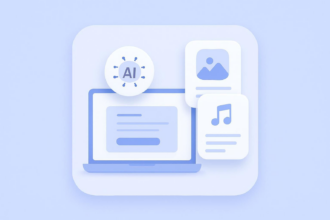











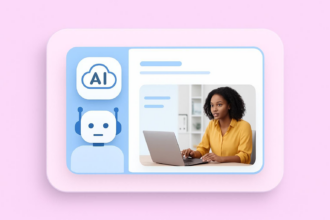
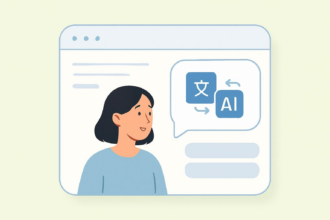








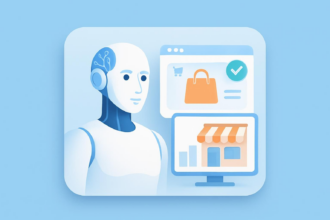











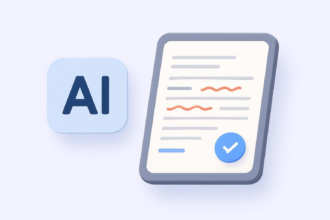






















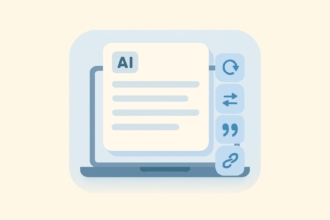

























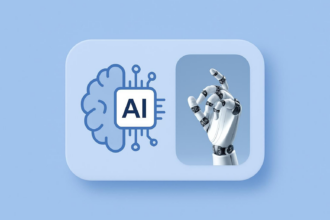


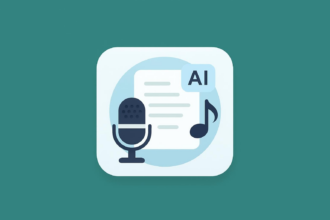



Send Comment: